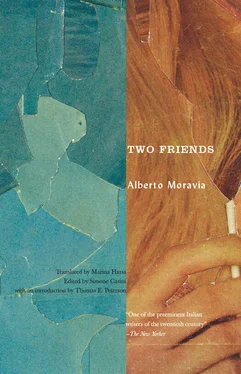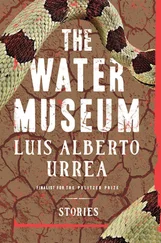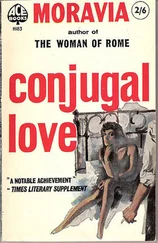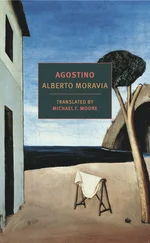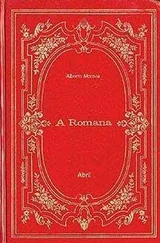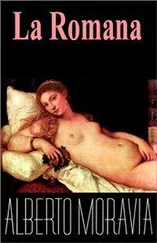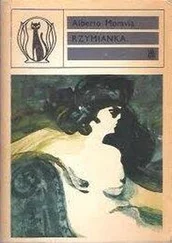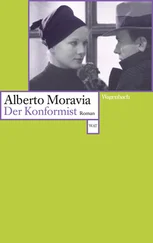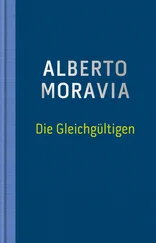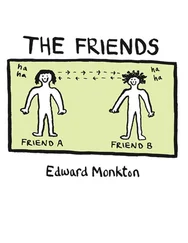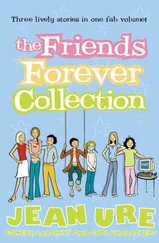But, as we have seen, it was in July of that year that Moravia began his new novel. In a letter to Bompiani from Anacapri dated September 7, he writes: “This summer I completed a hundred pages of the novel I began writing in July. I’ve abandoned the other one I was working on, after writing about three hundred pages, at least for now. This new novel looks promising.”
It seems likely that this “new novel,” begun in July 1952, was Fantasma di mezzogiorno, or Il disprezzo , which, after several drafts, Moravia would finish in August 1953
and send to the publisher at the beginning of 1954. In this letter, the “abandoned” novel is not referred to as a “very brief novel” (as on January 8), a “brief romanzetto ” (as on March 20), or a “brief novel” (as on May 2), but rather as a three-hundred-page text, perhaps the “long novel” mentioned to Festa Campanile in February 1953.
III. INTERIM CONCLUSIONS
The contradictory, inconclusive data we have been able to collect does not permit us to completely elucidate the evolution of Moravia’s process in the early fifties, or to identify with utter confidence the typescripts in our possession. That said, it is possible to propose the following hypotheses.
THE STORY OF SERGIO AND MAURIZIO
It is likely that the typescript we have called Version B is in fact the “very short novel” referred to by Moravia in his first interview with Festa Campanile as well as in his March 20 letter to Valentino Bompiani, the same book which he referred to as a “brief novel” in his May 2 letter to Giacomo Antonini. More specifically, it appears to be a “revision” of an earlier draft, written between March and May 1952.
Since the two other versions, A and C, can be placed before and after Version B, they can also be considered part of this “brief novel” Moravia was working on. Version A would therefore be a section of the first draft; since the March 20 letter to Bompiani refers to a “finished” text, we can conclude that many pages have been lost. Version C could then be dated to the period between May and July 1952.
It is clear that this is not a finished work. Each version is a revision of the previous one, and there certainly would have been more. At this point it is necessary to shed light on the connections between this “brief novel,” written in early 1952, and the “long novel” that seems to have preceded it, as well as the one that followed, Il disprezzo .
Regarding the “long novel,” we have only a few details of its theme, the effect of political ideology on the amorous relations of young Communists; in addition, we have the information that the draft had reached three hundred pages in July 1952 and that it was subsequently burned, probably sometime between September 1952 and February 1953. The difficulty lies first of all in defining the identity of this unfinished, lost, and burned text. We can exclude the hypothesis that, despite the author’s declarations, it might have survived and could be related to one of the novels that came after Il disprezzo , such as the project mentioned in the 1971 interview with Siciliano or even La ciociara , from 1957, despite that book’s long gestation period, which extended back to the forties (see Opere , volume 3, pages 2150–67).
Thus, there are only two alternatives: either the “long novel” and the “brief novel” are two separate projects, or they are substantially one and the same. In the first hypothesis, Moravia effectively would have written a long novel of around three hundred pages, already in an advanced state in 1951, and then burned it, perhaps saving one section. It is possible that the story “Luna di miele, sole di fiele” (“Bitter Honeymoon”), which was published in the journal Paragone in November 1951 and was subsequently included in the second edition of Racconti 1927–1951 (1953), bears some relation with this project on the subject of Communism (see Opere , volume 3, pages 355–85). The second hypothesis is that the “long novel” and the “brief novel” are actually the same project, and that these contradictory references are the result of different phases, revisions, expansions, or reductions lost to time — or simply of Moravia’s imprecision.
At this time, this second hypothesis appears to be the most likely scenario. What is certain is that there is a thematic affinity between the “story of a group of young Communists and the relationship between their romantic lives and their political ideologies” and the plot found in these typescripts at the Fondo Moravia, in which ideology in fact destroys the relationship between two young lovers. The story that emerges from these typescripts breathes life into the ghost of the previously lost novel regarding the lives of young Communists. It would seem likely that Moravia’s passing mention in his 1953 interview with Festa Campanile is an indirect reference to the typescripts now at the Fondo Moravia.
THE PREHISTORY OF IL DISPREZZO ( CONTEMPT )
There is one final aspect to consider: the connection between the “brief novel” of 1952 and Il disprezzo . The first idea for Il disprezzo seems to date from before the composition of the novel on the theme of Communism, as documented by a letter to Valentino Bompiani dated June 1951: “I’m thinking of writing a brief novel that will include a ghost as one of the characters” (Archivio Bompiani). This mysterious note makes sense when one considers the original title of Il disprezzo, Il fantasma di mezzogiorno , referring to a “ghost” who appears in the epilogue (see Opere , volume 3, page 2128). This idea probably emerged from an autobiographical context, Moravia’s conjugal crisis, which is worth exploring insofar as it allows us to identify his narrative process. The most explicit reference comes from an interview with Alain Elkann, after the death of his first wife, Elsa Morante:
MORAVIA: Yes, there were days when I wanted to kill her. Not to separate, which would have been a rational solution, but to kill her, because our relationship was so close, so complex, and so thoroughly alive that violence seemed easier than separation. […] In any case, the idea of killing her soon became a novel, Il disprezzo . In my original idea for this novel the protagonist, reacting to his wife’s unjust attitude, planned and executed her murder. But this idea of killing her disappeared in the process of writing. The wife dies in an accident. The protagonist of the novel that I actually wrote bears no relation to the one I had imagined.
ELKANN: Did Elsa recognize herself in the book?
MORAVIA: No, and how could she? The only thing the book I never wrote had in common with our experience was the theme of uxoricide. The rest would have been pure invention.
From 1951 onward, the author imagined and perhaps began composing a novel based on the idea of uxoricide; however, he didn’t begin seriously working on the book until a year later, in July 1952. Meanwhile, this project intersected and in part absorbed another project on the subject of Communism and the friendship between Sergio and Maurizio. The interaction between these two projects is profound and inevitable, and it is clear that certain narrative elements in Il disprezzo had already been developed in the novel about Sergio and Maurizio: the idea of Sergio’s writing a screenplay, the love triangle, and even the theme of “contempt.” According to the letter dated September 7, 1952, the abandonment of the novel about Communism occurs at the moment that the “new novel” begins to take shape; between July and September the writer has already composed “one hundred pages” and realizes that he is on the right track: “This new novel looks promising.” By a few months later, when he is interviewed by Festa Campanile, the new novel has acquired a title: Il fantasma di mezzogiorno —which, as we have said, would later become Il disprezzo .
